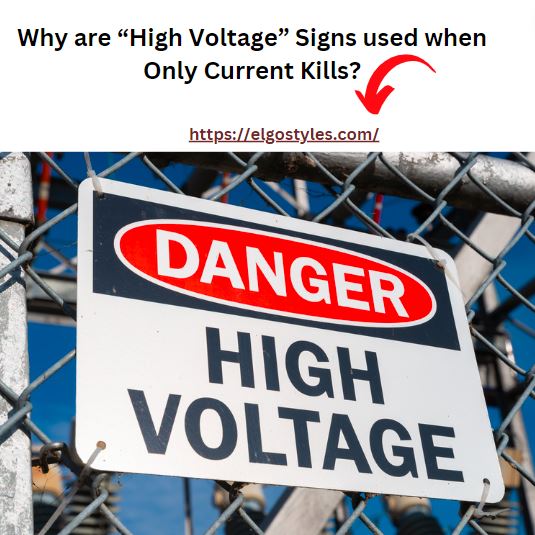Answer:
“High Voltage” signs are used because high voltage can lead to increased current flow, and it is the current that poses the primary risk of injury or death. High voltage can cause current to surge, creating hazardous conditions.

Reasoning:
Voltage and Current Relationship: Ohm’s Law (V = I * R) highlights that voltage, current, and resistance are interrelated. High voltage can result in increased current flow, elevating the risk of harm.
Arcing and Sparking: High voltage can cause arcing and sparking, leading to electrical discharges and increased current levels, creating a dangerous environment.
Potential for Electric Shock: Elevated voltage can overcome the body’s resistance, allowing higher current to flow through, increasing the risk of electric shock and harm.
Equipment Hazards: High voltage may pose risks to equipment, causing malfunctions, fires, or explosions, with potential for subsequent harm from current-related events.
FAQs:
Q: Does high voltage alone pose a danger?
A: While high voltage alone is not lethal, it can lead to increased current, which is the primary danger.
Q: Why highlight high voltage if current is the risk?
A: High voltage can lead to conditions where current surges, making it crucial to warn about potential dangers.
Q: Can current flow without voltage?
A: No, current requires voltage to flow; high voltage increases the potential for current-related hazards.
Q: Why not just use “High Current” signs?
A: Voltage and current are closely linked; high voltage often leads to elevated current, necessitating a broader warning.
Q: Is resistance a factor in these warnings?
A: Yes, resistance impacts current flow, and high voltage can overcome resistance, leading to increased current.
Q: Can you experience electric shock from low voltage?
A: Yes, if there’s sufficient current flow, even low voltage can result in electric shock and injury.
Q: How do high voltage signs enhance safety?
A: They alert individuals to potential hazards, prompting caution and adherence to safety protocols to prevent accidents.
Q: Are high voltage signs used in all industries?
A: Yes, they are commonly employed in various industries with electrical equipment to ensure safety awareness.
Q: Can insulation prevent the dangers of high voltage?
A: Insulation helps, but signs are essential as insulation can fail, and high voltage may still lead to current-related hazards.
Q: Are high voltage signs regulatory requirements?
A: In many jurisdictions, using high voltage signs is a regulatory requirement to comply with safety standards.
 Electrical Engineering World Wiring a Brighter Tomorrow!
Electrical Engineering World Wiring a Brighter Tomorrow!


